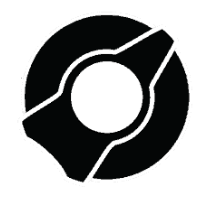The synth sounds of Michael Jackson's Thriller (and how to recreate them in your DAW)
In celebration of Thriller's 40th birthday, we take you on a guided tour of the album's classic synths and show you how to reproduce their sound with modern software

Michael Jackson’s Thriller, the biggest-selling album in musical history, celebrates its 40th anniversary this week. To mark the occasion, we're taking a detailed look into the synth sounds used in this iconic record and showing you how to recreate them using modern software.
Thriller was the follow-up to 1979’s Off the Wall, MJ’s first collaboration with producer Quincy Jones, as well as Triumph with The Jacksons, released in 1981.
Following the Triumph tour, Quincy Jones began to assemble a dream team of musicians and engineers at Westlake Studios, California in August 1982. Many of the big players on Off the Wall returned, including songwriter Rod Temperton, session keyboardists Greg Phillinganes and Michael Boddicker, and the late Bruce Swedien on engineering duties.
The album also featured guest appearances from pop legend Paul McCartney on “The Girl is Mine”, rock guitar virtuoso Eddie Van Halen on “Beat It” and Vincent Price, the ‘King of Horror’, on the title track.
Epic Records wanted the Thriller ready for release in November, just in time for the Thanksgiving shopping season. This tight deadline was compounded by the E.T. Storybook, which Michael Jackson and Quincy Jones were simultaneously working on in the same studio. The team had to work around the clock to complete Thriller on time.
Looking for a more ‘cinematic’ sound, Quincy Jones enlisted synthesizer programmers Anthony Marinelli and Brian Banks, who bought every synth available at the time and turned up to Westlake Studios with three trucks full of instruments.
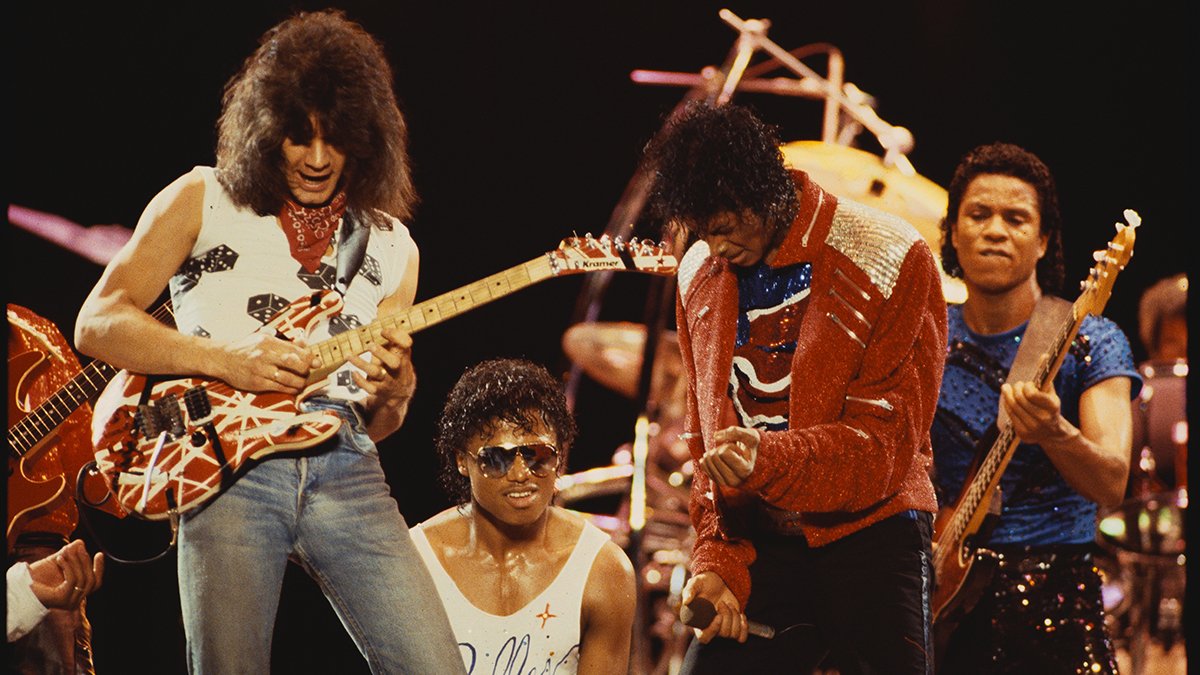
Engineer Bruce Swedien on the making of Michael Jackson's Thriller
As such, many of the iconic synthesizers of the era are present on Thriller, including the Yamaha CS-80, Sequential Prophet-5, Roland Jupiter-8, Minimoog, ARP 2600, E-mu Emulator I, Synclavier II and Oberheim OB-X. Michael and his team were continually looking for cutting-edge sounds; some of these synthesizers had only been released the year prior.
Thriller was created before sequencing and digital synthesizers became commonplace, so almost every instrumental part on Thriller was played manually by seasoned session musicians. The album is full of groove and swing, and the sounds are distinctly analogue.
In some places, synths are layered with real string or brass performances. In contrast, Jackson’s next album Bad, released in 1987, features a distinctly different sound, full of crystalline digital synth sounds and sequenced arrangements.
Want all the hottest music and gear news, reviews, deals, features and more, direct to your inbox? Sign up here.
Linndrum LM-1
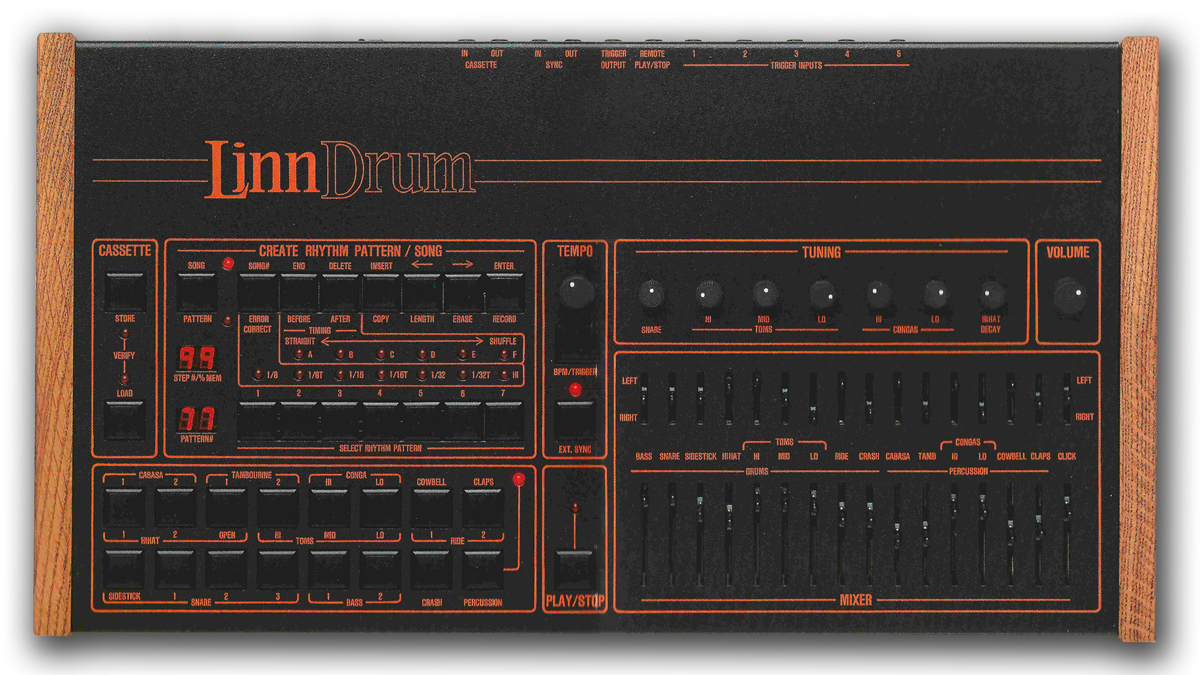
Although most of Thriller’s musical parts were played by skilled session musicians, the LinnDrum LM-1 is one notable exception. The LM-1 was an early sample-based drum machine with an onboard drum sequencer, and it appears on “Wanna Be Starting Something”, “Human Nature” and “Thriller”.
The drum sounds in these songs are all stock LinnDrum sounds with not much processing, and can be faithfully recreated using LinnDrum samples in your DAW. Ableton Live comes with a sampled kit called LD Core Kit and Logic Pro X includes an electronic drum kit simply called LinnDrum.
The main key to programming convincing sample LinnDrum patterns is to pay attention to the tuning and relative volume of each drum sound. The beat for “Wanna Be Starting Something” features drum sounds that have been tuned quite low. Here’s our recreation, using the LD Core Kit in Ableton Drum Rack.
The LM-1 model features panning switches, which means that its drum sounds are panned hard-left, centre or hard-right. As a result, a lot of LM-1 beats feature hard-panned sounds. The congas and toms in the “Thriller” beat are hard-panned left and right, creating a wide sound, while the kick, snare, hi-hat and cowbell cut down the middle.
ARP Instruments 2600
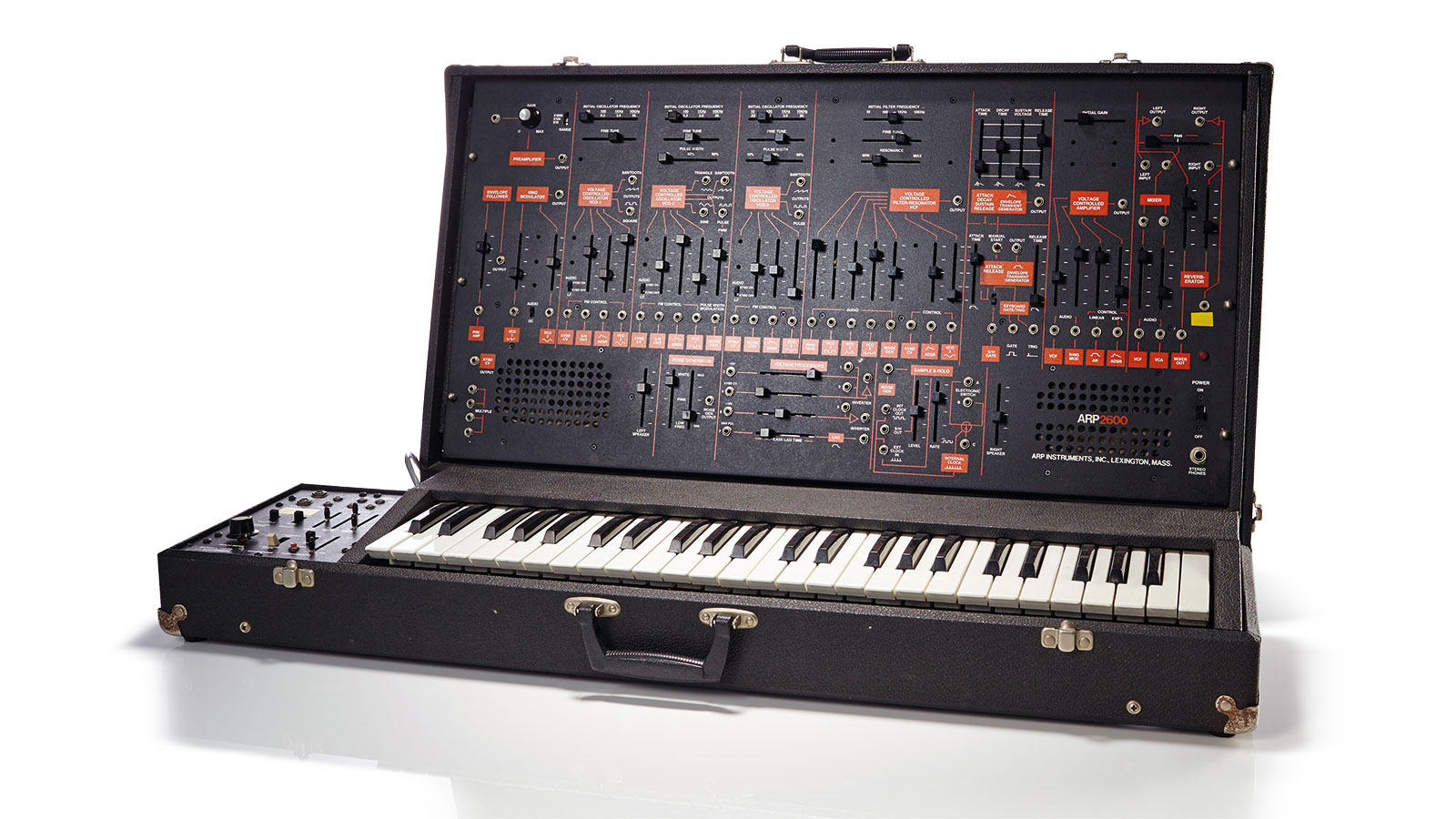
“Thriller” was written by Rod Temperton and was originally titled “Starlight”. The early version had a more disco-oriented sound without the cinematic horror elements, and can be heard on the Thriller 40 reissue.
Although the iconic funky bass sound on the title track “Thriller” is often thought to be a Minimoog, the Stories in the Room podcast recently revealed that the sound actually came from an ARP 2600. In the video below, you can see Thriller synth programmer Anthony Marinelli showing keyboardist Greg Phillinganes the difference between the two sounds.
To program the “Thriller” bass sound on your own synth, you need to start with detuned sawtooth and square waves. Set the filter cutoff frequency to 150 Hz and use the ADSR envelope to open and close the filter.
The key to getting the aggressive ‘bite’ is to raise the resonance to about halfway and setting the decay time to a snappy 100ms. Here’s my recreation using Arturia ARP 2600, a software emulation of the hardware synth used on “Thriller”.
The warm verse pads on “Thriller” were created by layering two different synths playing the same chords. Layering can create rich sounds with more depth than a single sound.
In the book Let’s Make HIStory, Anthony Marinelli says the synths used for the “Thriller” verse pads are a Roland Jupiter 8 and a Yamaha CS-80. Despite the heavyweight synths used, the sounds are relatively simple and can be created with any polyphonic synth.
The first patch, likely the Jupiter-8, uses two detuned sawtooth waves with the filter cutoff around 650 Hz. Our recreated patch has a small amount of LFO modulation on one of the oscillators to create a lush chorus effect. The second patch, likely the CS-80, uses a single sawtooth wave for a thinner sound, and the filter is in a lower position than the first patch.
One of the great things about layering is that you can hard-pan the separate tracks to create a wide stereo sound. That’s precisely what’s happening in “Thriller”, with the detuned Jupiter-8 pad panned to the right, and the CS-80 sound panned to the right. Listen to the difference below.
Yamaha CS-80

Billie Jean was written by Michael Jackson, who recorded a demo version with Bill Wolfer, which can be heard on Thriller 40 as “Billie Jean (Home Demo from 1981)”. There are two separate bass tracks in Billie Jean. Louis Johnson played the first bassline that plays at the beginning of the song on bass guitar. This is joined by a Minimoog bass that comes in right when the chord sequence starts.
The “Billie Jean” chord sequence was performed on the Yamaha CS-80, a legendary synthesizer famous for its use in the Blade Runner soundtrack by Vangelis. The “Billie Jean” chord patch is a soft, string synth sound, which we've recreated in Arturia CS-80 V4. To recreate it yourself, use a single sawtooth wave oscillator with the LPF filter set to 305Hz with a soft attack and decay envelope to open the filter on each chord.
The Yamaha CS-80 chords are doubled with a multi-track vocal performance of Michael singing each note of the chord sequence, creating a barbershop choir effect.
The CS-80 track was apparently performed by Michael, with Michael Boddicker telling Keyboard Magazine in 2009: “That fuzz was also part of a multilayered sound I used for the four-chord basic string vamp on Billie Jean - Michael Jackson himself played that part on a CS-80 in one take. No punches. No repairs. No sequencers or time correction. Seven minutes. Perfect performance.”
The CS-80 was also used on “Human Nature”, with synths performed by Steve Porcaro and David Paich of Toto fame. They were big fans of the CS-80, as they also used it for the main chord sound in their hit song “Africa”.
- Editor's note: Michael Boddicker's account of the making of "Billie Jean" has been disputed by Bill Wolfer, who claims that he both played and programmed the synth parts heard on the track. Read his response here.
E-mu Emulator I
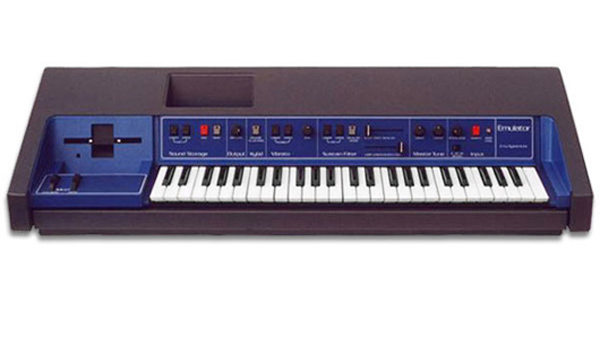
One of the most unique sounds on Thriller is a synthetic human voice sound. You can hear it in the second verse of “Billie Jean”, in “Human Nature” and in the intro of “P.Y.T.”. This sound comes from the E-mu Emulator I, an early sampling keyboard, that was loaded with a sample of Michael’s voice.
“It sounds multitracked, but really, it’s not," Michael Boddicker recalled of the patch's creation. “It’s a single-track sample of Michael Jackson’s voice, done on an E-mu Emulator I — serial number 1, in fact! We then used this mode the Emulator had where you could sample the sound twice, then detune one of the voices while in “unison” mode.“
To create a similar sound, you might try recording a sample of your voice singing “ooh” and loading it into your DAW sampler to playback with a MIDI keyboard. In the examples below, we've used the 'Male Ooos' sample from the Emulator II sample library to recreate the sound. In “Billie Jean”, this melody is layered with a real string section that doubles the melodic line.
New England Digital Corporation Synclavier II
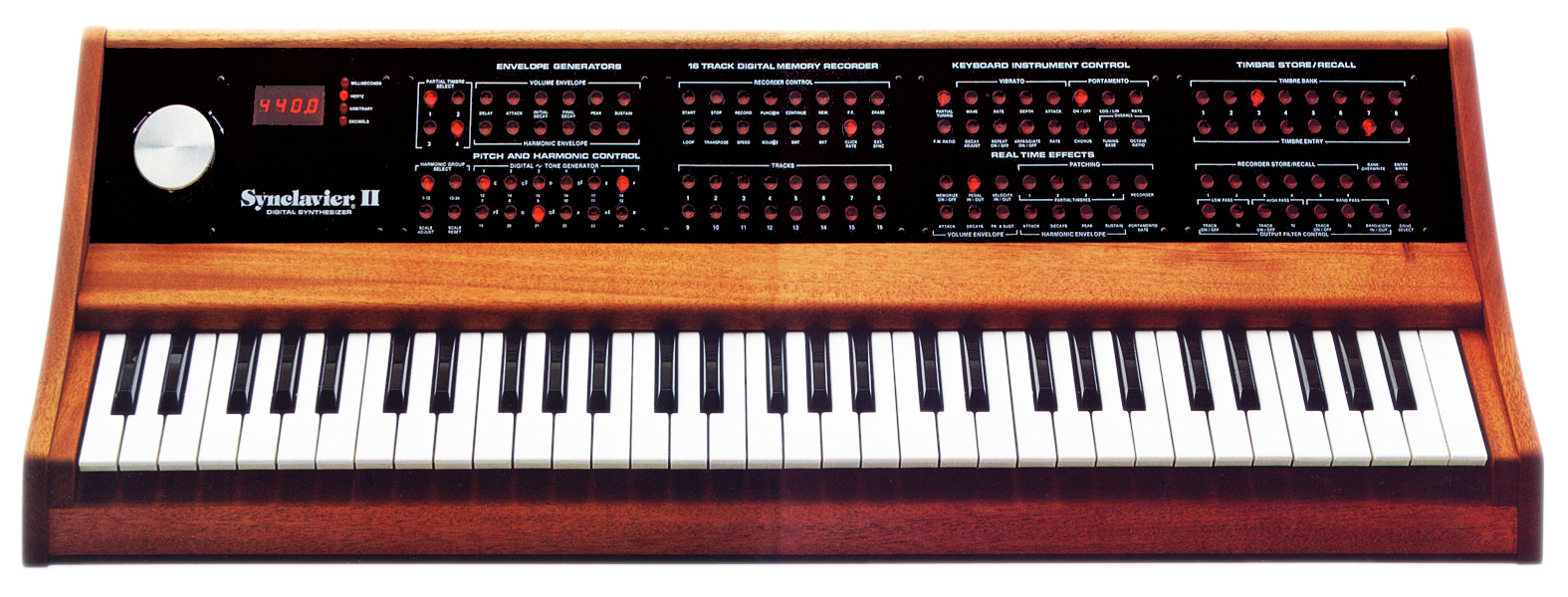
The instantly recognisable gong sound that opens “Beat It” is from the Synclavier, an early digital synth that made use of FM synthesis. But there’s an interesting story behind how it got there.
When the Synclavier II was debuted in the early 80s, New England Digital put together a demo record called The Incredible Sounds of Synclavier II to showcase some of the new sounds possible with the emerging technology. The record features a demonstration of the Phased Gong preset, which you can hear in the video below.
In the book Let’s Make HIStory, Thomas Bähler recalls being contacted by Michael, who had heard the demo and wanted to use the gong sound in “Beat It”. Bähler bought a Synclavier to Westlake and recreated the gong demo for Michael, who was unconvinced that the sound was the same.
Bruce Swedien applied some studio EQ to the Synclavier sound to more closely match the record until Michael was happy. They recreated the demo record note-for-note, which is the sound heard at the beginning of “Beat It”.
The Phased Gong preset can also be found in the Arturia Synclavier V software plugin. However, if you load the preset and play it, you might notice that the raw sound is too bright and fizzy to match the sound heard on “Billie Jean”.
In addition to the EQ added to darken the sound, the Synclavier Gong is also layered. Dave Polich, the synth programmer for Jackson's “This Is It” tour, revealed in a forum post that the sound was layered with a Timpani sample, which adds a percussive element.
Here’s a quick example of layered version, using the Phase Gong preset from Arturia Synclavier V and the Gong & Timpani preset from Arturia Emulator II V.


Dan Carr is a Glasgow-based musician, sound designer and writer, and the man behind the website Reverb Machine, where he shares synth programming guides, painstaking recreations of songs and custom synthesizer presets. He started as a guitarist and bass player before discovering synthesizers and electronic production around 2015.
